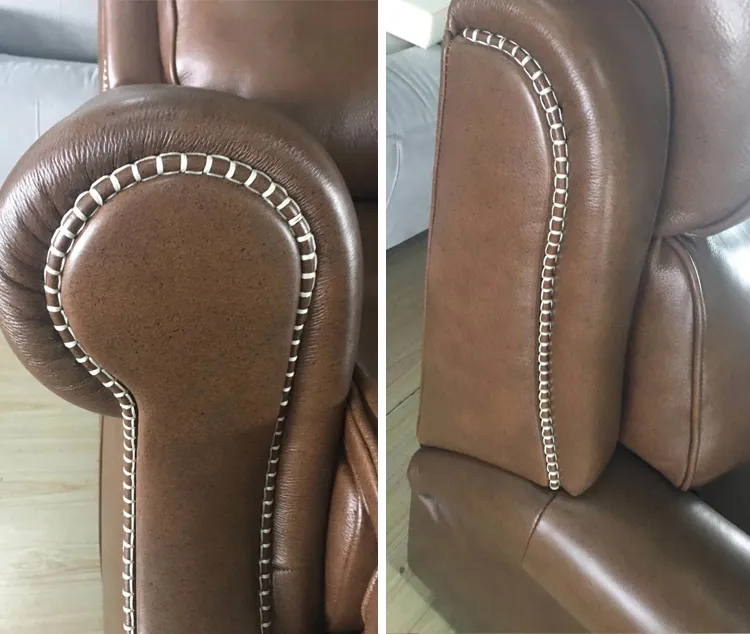Best Sewing Machines for Leather Crafting and Stitching Projects
A Comprehensive Guide to Choosing a Sewing Machine for Leather Stitching
When it comes to creating durable leather products, whether as a hobby or a professional craftsperson, selecting the right sewing machine is crucial. Leather is a robust, thick material that demands specific features in a sewing machine to ensure clean, secure stitches. In this guide, we will explore the key aspects to consider when choosing a sewing machine for leather stitching.
Understanding Leather Types and Their Thicknesses
Before delving into machine specifications, it's essential to understand the different types of leather and their corresponding thicknesses. Leather comes in various forms, including full-grain, top-grain, suede, and bonded leather, each presenting unique stitching challenges. Typically, leather is measured in ounces, where one ounce equals approximately 1/64th of an inch. For instance, lightweight leather (up to 3 oz) is suitable for projects like wallets and bags, whereas heavyweight leather (above 8 oz) is used for belts and saddles. Your sewing machine must accommodate the specific thickness and type of leather you plan to use.
Key Features to Look for in a Sewing Machine
1. Heavy-Duty Construction Opt for a sewing machine built with a solid frame and durable materials to handle tough stitching tasks. A machine with metal parts is generally more reliable and can withstand the stress of working with leather.
2. Walking Foot A walking foot or a roller foot is vital for sewing leather. This feature helps feed the leather evenly through the machine, preventing slipping and ensuring even stitches, which is crucial when working with thicker materials.
3. Powerful Motor Leather requires more power than typical fabric. Look for a sewing machine with a robust motor that can handle heavy-duty materials without stalling. A machine with at least 1.5 amps or higher is ideal.
4. Adjustable Stitch Length Adjustable stitch length is particularly important for leather, allowing you to create longer stitches to accommodate the thickness and prevent the leather from bunching up. Generally, a stitch length of 2.5 mm to 4 mm works well for leather projects.
5. Needle Compatibility Ensure the sewing machine can accommodate leather needles. Leather needles have a wedge-shaped point that allows them to pierce through thick materials without causing damage. Also, check if your machine supports a variety of needle sizes, as different projects may require different needle thicknesses.
6. Clearance and Throat Space The throat space is the area between the needle and the machine body. For larger leather projects, such as bags or jackets, having ample throat space makes it easier to maneuver the material. Choose a machine with a generous opening to enhance your workflow.
7. Tension Control Leather can be finicky when it comes to tension. A sewing machine that offers manual tension adjustment will provide the flexibility to dial in the correct tension for any specific leather type, preventing issues like skipped stitches or thread breakage.
Brands to Consider
sewing machine for leather stitching

Several brands specialize in sewing machines suitable for leather stitching. Some of the top contenders include
- Singer Known for its reliable and affordable options, Singer offers a variety of models equipped with heavy-duty features suitable for leather.
- Brother Brother sewing machines are praised for their innovative technology and user-friendliness, making them a popular choice for both beginners and seasoned artisans.
- Consew For those seeking a more industrial machine, Consew provides robust models specifically designed for heavy materials, including leather.
- Juki Renowned for their precision and durability, Juki machines are often favored by professionals in the leather crafting industry.
Additional Tips for Sewing Leather
While having the right machine is essential, here are a few additional tips for sewing leather successfully
- Use the Right Thread Polyester or nylon threads are recommended for leather as they offer strength and durability.
- Test on Scraps Always practice on scrap pieces of leather before working on your final project to fine-tune your settings and technique.
- Maintain Your Machine Regular maintenance, including cleaning and oiling, will ensure your sewing machine performs optimally and lasts for years.
Conclusion
Investing in the right sewing machine for leather stitching is paramount for achieving professional results in your leather crafting projects. By considering factors like machine strength, features, and brand reputation, you can select the best machine suited to your leatherworking needs. With the right tools and techniques, you can create stunning leather pieces that are not only beautiful but also built to last.
-
Industrial Cylinder Arm Sewing Machine: Revolutionizing Heavy-Duty SewingNewsJul.28,2025
-
Cylinder Arm Sewing Machine: Perfect for Special Sewing ApplicationsNewsJul.28,2025
-
Cylinder Bed Sewing Machine: Essential for Sewing Complex MaterialsNewsJul.28,2025
-
Heavy Duty Sewing Machine: The Essential Tool for Industrial ApplicationsNewsJul.28,2025
-
Computerized Pattern Sewing Machine: Revolutionizing Precision StitchingNewsJul.28,2025
-
Heavy Duty Industrial Sewing Machine: Power Meets PrecisionNewsJul.28,2025
-
Leather Sewing Machine: The Industrial Standard for Tough MaterialsNewsJul.18,2025





























